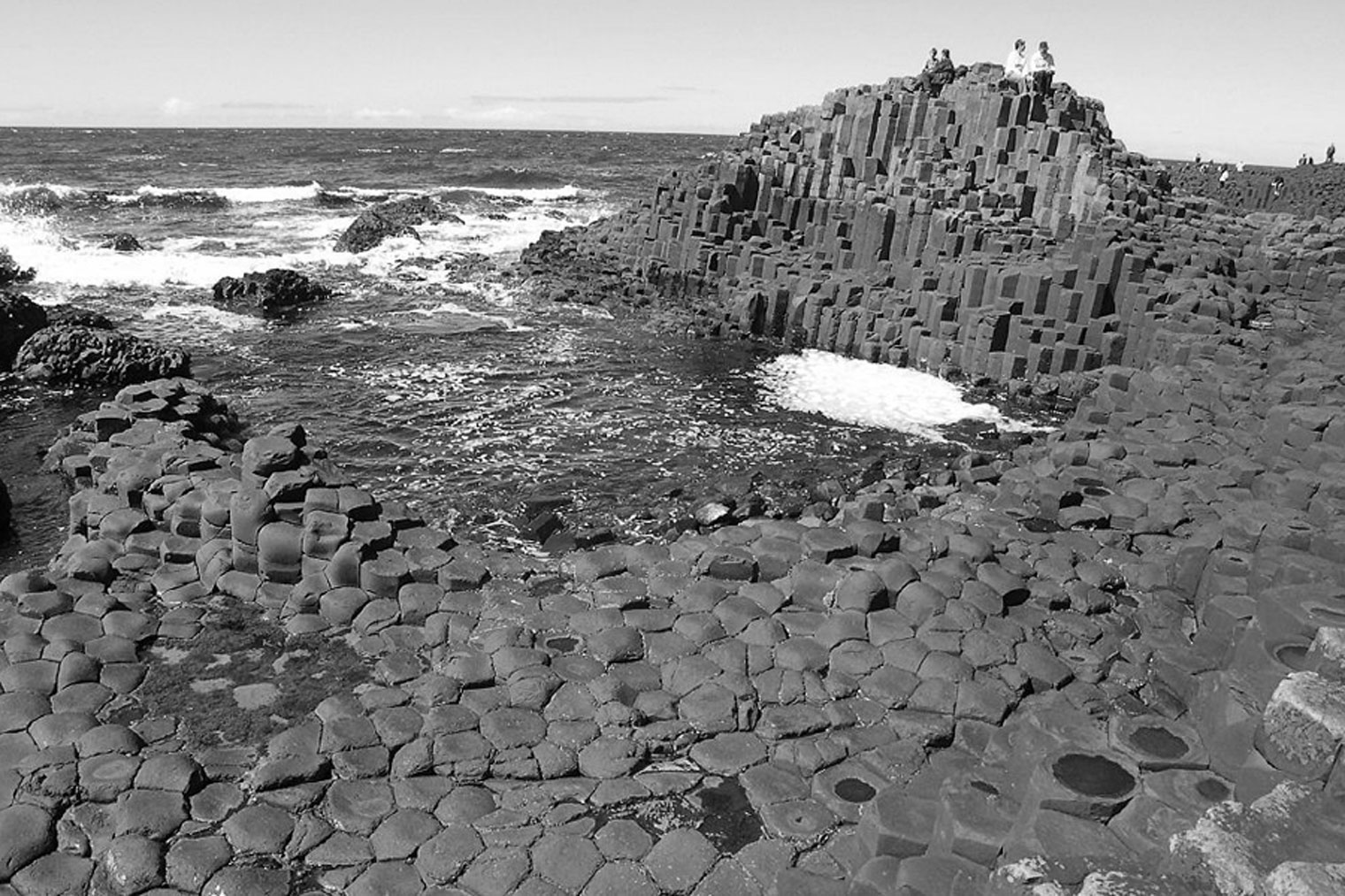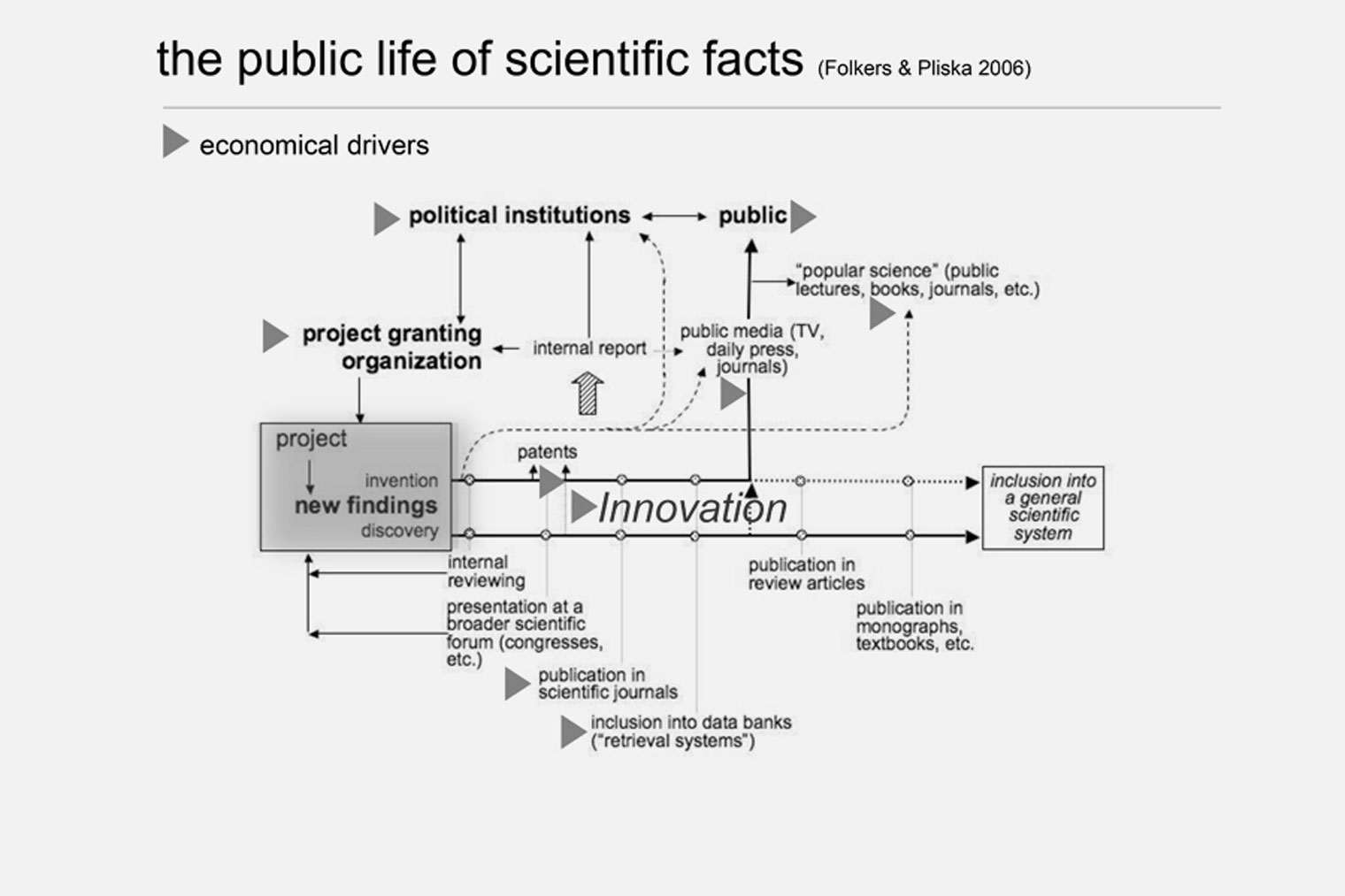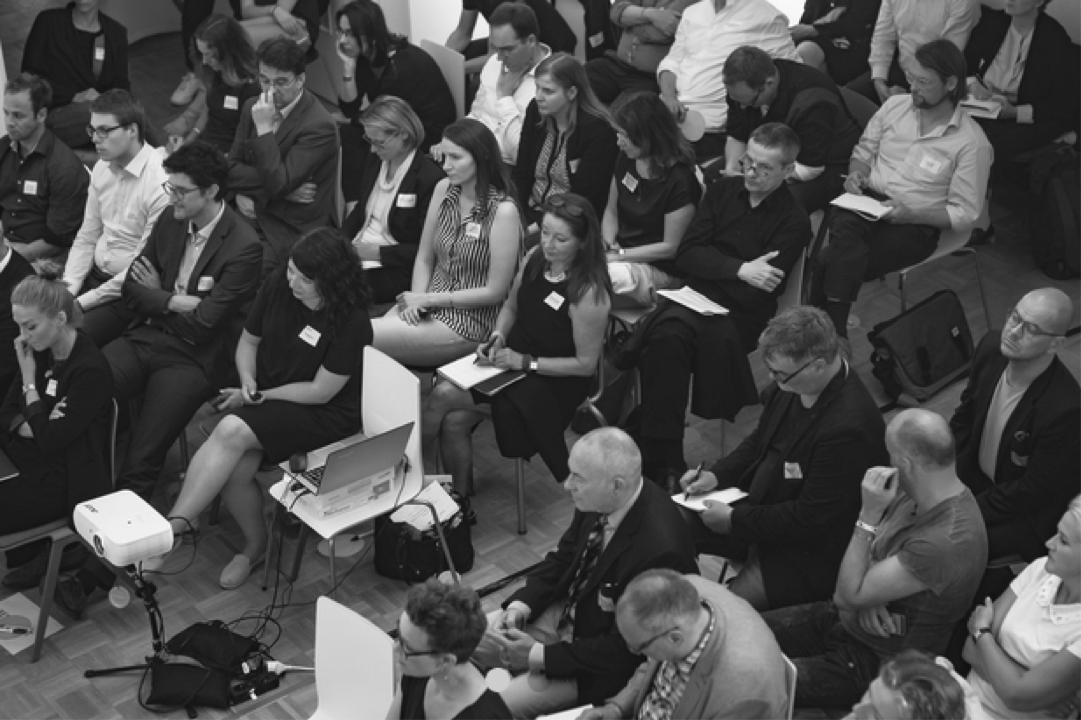Creativity Meets Science
Dr. Gerd Folkers, professor of pharmaceutical chemistry at ETH Zurich, aims to explain the relation between science, creativity and global creative enterprises.
Science, chemistry, physics, pharmaceuticals and creativity – what do those fields have in common and how can they stimulate, complement and support each other? During his talk at the Venice Biennale, Dr. Gerd Folkers, professor of pharmaceutical chemistry at ETH Zurich, tried to explain the relation between science, creativity and global creative enterprises.
What is the problem with globality in sciences? There is absolutely no problem. Because it is our firm believe that fundamental constants – and when we talk about fundamentals we think about charge, parity, mirror symmetry, something else – are global, that they are the same physic law in every point of this world. We even more believe that they are universal, not only global. So then creativity should be easy. Just go ahead, use the physical laws and do it. And this is especially interesting for science based industries as the pharmaceutical industry, because they want to create value. Value creation was in the centre, in between all this force fields. So the question is: Can we do it among the physical laws or can’t we do it? We can’t. Surprisingly enough, with all the knowledge that we have, we are withdrawing every year one of the big blockbusters from the pharmaceutical market, because of severe side effects, because of – even worse – lack of efficiency, because it does not show any effect in human beings – worse in a commercial sense of course – and the question is, why is this happening?
Emergence and granularity – about the relevance of two phenomena
I would like to draw your attention on two finally not well-understood effects and phenomena that we see in science and this is emergence and granularity. I would like to discuss a little bit their relevance. Let us start with a simple example: a kiss. That is definitely a kiss [points at presentation slide, see .pdf-file] but the question for a scientist is: What is going to happen there? Can I trace this back to a molecular level? Is there dopamine, serotonin, adrenaline, something in weird action? Definitely, it is. The question is: Is this level good enough to describe what is happening there? Is this an emotion or a feeling? Or is this an emotion that will develop into a feeling? Or is this just hiding something? Is this a big show? We cannot tell from the fundamentals, fundamental constituents, what is going on there. And this already creates a difficult situation if you want to control that. Let me make it a little bit clearer from a very famous example.

So this picture caused a battle in science after the enlightenment. For hundred years there were two parties, the neptunists and the plutonists. The neptunists believed that the landscape you can see on the picture emerged from a huge ocean that shaped the stones, the mountains, everything that we see. The plutonists, in contrary, were convinced that volcano activity was the reason. And you will find this topic about the battle between plutonism and neptunism in all kinds of literature, like Münchhausen or Oliver’s Travels. They all have these topics of the battle between plutonism and neptunism. Even the grand master of poetry, Goethe, was involved in this battle and he travelled to these places and visited them and tried to get a clarification of what happened there. So it was not until the 19th century that it became clear that those hexagonally shaped basalt pillars were in fact no crystals.
Emergence cannot be predicted by physical technology
What does it mean to be a crystal if you live in a near hotel close to the academia? Or when you examine a piece of art where you see a huge crystal formed by bicycles? Being a crystal means that you have a repetition of a single unit for nearly infinite space. This is definitely not true for these basalt rocks. They are of amorphous material and the regularity, shape and hexagonality (there exist also five- and four-sided rocks) simply emerge from a flash freezing of the lava in the Northern Sea. They emerge! You are not able to predict by physical technology and physical methods the creation and formation and emergence of these patterns. You can do it statistically, then they are all 5.2 sided or something like that. This will not help you in the design of one of these pillars. So obviously, emergence is a difficult notion in science and the patterns, on the other hand, are an important tool to recognize emergence and physical processes. If you now would go down in the basalt rock in terms of chemistry, you would definitely see silicon molecules; you would see all kinds of silicon related complexes. And you could predict little parts of it. This is what you can do in modern kitchen furniture when you design complex ovens. You could predict the hardness and resistance of their stone covers. But you cannot predict the material of such patterns in this huge areas.
So we have to think about, if I do predictions – which would be extremely interesting for the creative industry, which has the interest to make money – if you would be able to do predictions, then the question is, at which level have these predictions to be done? At the molecular level, on a phenomenological level or on a global level? And this is a question of granularity.
The five hallmarks of the emergence processes
There are five hallmarks in this emergence processes. The first one is radical novelty. I give you here the examples for evolution theory. Radical novelty means nature invents – that’s the poetic view – or it emerges from the molecules a completely new technology. In this case to transmit information and to control growth. This transcription factor, a very complex molecule, controls growth of cells, development, plasticity, whatsoever. So this transcription factors make up our personality.
The second hallmark is coherence and correlation. This radical novelty is not just there and does something. It is limited in space. So it has a coherent space, and it is correlated within this limited space to the development of what happens in this space. One representation would be the different skull forms. It is very typical that the transcription factor forms the possibility of getting different skulls during the evolution. And the change of thermodynamics of spacial temporal relations of these description factors made it possible to have different steps in the evolution of skulls.
The third hallmark marks the transfer of these radical novelties to the macro level. So we are now already changing the levels and the macro levels. This would mean that despite being not being able to predict what happens because of the high complexity, you end up in a behaviour. On this typical macro level we study complex situations.
But the most important thing for our societies is that these radical novelty ends up in a fourth hallmark, the dynamical behaviour. The behaviour is not just there but leads to the construction of the environment. So for example towns. We are here at the Architecture Biennale, which is ostentatious. This means, within the town, the behaviour shows development. And that means ostentatious. It shows for example urban gardening, traffic jams, normal transportation, Internet relations, and so on. This is what is meant by ostentatious.
Everything is connected – the feedback loops between the different levels
So now we have travelled from the molecular level through all the hierarchical levels or granularities to an ostentatious behaviour of what molecules did. This is a very straight forward, a very conservative, a very linear view of what happens. But of course it is not a linear line, a linear development on these different levels. But all these different levels have feedback loops to each other. So the behaviour itself may also influence the presence in creation of the transcription factors. That means the environment and the impression that you get from it will also feedback the existence, the creation and the activity of the molecular transcription factors. So we have a very complex interrelationship between novelties on different levels. That’s what we tried to fill out in this diagram, where we described the granularity or the descriptive granularity and its relation to the level of complexity. On the left side you can see the granularity, which starts with the canonical observables, the fundamentals or first principles: charge, parity, symmetry, mirror symmetry. Moreover it goes to thermal properties, properties of organic matter, persistent patterns and elements of meaning. On the level of complexity we have inanimate matter, the rocks, maybe an easy case, living organisms, extremely complex up to mental processes. The most complex situations are the most complex systems that we know at the moment.
The trouble of applying creativity in science
Now the question is: Which technology and methodology on which granularity can be used to describe the complex situation or the complexity of the object we are interested in? That is still in the grey area. You see that mechanics can be used to describe inanimate matter. That’s why more or less a car works. Thermodynamics and chemistry can at least be used for describing primitive starting organisms like viruses… It probably ends with viruses. Then the properties of organic matters are the biomedical sciences that are my field and describe living organisms. So you can already see, if you use thermodynamics or chemistry to describe living organisms, you would leave the original field. If you use biomedical sciences to describe organisms, the property of organic matters, you forget about – normally, you forget about – thermodynamics, organic chemistry and physics. That makes it difficult because you have to introduce a certain kind of reductionism to describe the complex organisms in simpler ways. And this is true at the end, which is evident, for literature, hermeneutics, and linguistics. You could also read the left side as the difference between grammar and syntax and the phenomenology or the meaning of the complex system that you want to describe.
So, within this field, creativity in science takes place, and the problem is, that we do not know exactly, how to apply and where to apply the creative process. So can I control a piece of literature by precise knowledge of all the transcription factors that I have in my body? Theoretically, that would be possible. In practice, because of the complexity, it is not. And the big question in a global creative economy, like the pharma economy is, where is the onset, where do I start, at which level does the description start, what will be the outcome and what will be the benefit and is it predictive?
The problem about detecting and doing research on novelty
Since several years one of my colleagues and I are working on mapping down these processes, at least for the sciences. And here you see the detection processes for novelties that may end up in innovation.

In contrast to that, there is the novelty. And the problem with novelties is, you would probably not be able to recognize something that is radically novel because you don’t have any category for the novelty. So every novelty has a certain piece, part or percentage of things that are already known. This allows you to recognize novelty and to put it at least in the category “novel”. And then only by exchanging its relations with the context, the opacity of the novel finding will become translucent so you will learn about what is really novel in the new findings. This is of course, especially in science, heavily influenced by economical forces. The first problem is, you have to find the money for doing research on novelties. The money normally is granted by a founding organisation, by private benefactors and so on, but you have to convince them. So there is politics, economies behind that. All the red dots, the red triangles indicate where economical forces – not only in terms of money – are in place. And eventually, during the pass of innovation, you will install or establish the new finding as part of a more general scientific system. To take the ideas of Ludwig Fleck who said the integration of a novelty in a more general scientific field or system is a question of the thought style. And the thought style, and the thought community, is more important for the establishment of a new idea than the idea itself because, again, you have the interrelation and the feedback loop between the environment that makes or brings your novelty from opacity to the translucent. The importance of the environment guides your thought style upon what is really new on the object that you have seen. Many examples of new findings have not been designed as new findings. They are fantastic pieces of creativity – like penicillin – but have been found just by chance. And we have a more elegant description for that: we call it serendipity.
I would like to discuss this serendipitous findings and creations in the world that are also related to the art world. It would be fun to have this round table discussion. This is enough for the moment, thank you very much for your attention.







